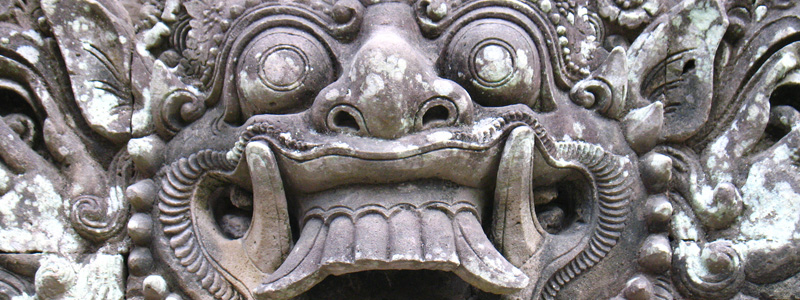
Study for the Month of March 2015
The Image of the Beast-Part VI
By Nathaniel Fajardo
The ‘Man of Sin’ of Bible Prophecy and his activities and career – Part I
INTRODUCTION
The Son of God and the Son of Man
This most fundamental of all Biblical truths must be firmly established at the outset for it shows the contrast between the Son of man and the man of sin:
The plan of redemption of the everlasting gospel is indeed “the good news of salvation.” Salvation from what? from the power of the following:
(1) Satan, the fallen Lucifer who became “the great dragon, the serpent of old, Satan, the devil, the master deceiver and enemy of God and man, who first caused the rebellion and fall of one-third of the angels in heaven in the first war against the law, kingdom, and authority of Jesus, the Creator
(2) sin, the great separator between the Creator and His creatures, which is simply is first, lack of faith and loyalty, resulting in yielding to the subtle temptations of the master deceiver to disobey God’s word and commandments and the transgression of His immutable law that governs heaven and the whole universe and the unfallen worlds.
(3) Its inescapable wages—is eternal death or “the second death” to which there is no resurrection. The first death is that which all mankind will experience as mortals. Yet, all who “die in Christ,” sleep in the dust from which man was made—the result of the plan which was devised in the councils of heaven of the Godhead before the foundations of the earth were laid, before the fall of Adam and Eve through transgression of the immutable law of God that governs heaven, the universe, and the unfallen worlds. There is only one Mediator between God and man—the incarnated Creator—Jesus Christ—the only Savior of mankind.
In this plan Jehovah Creator volunteered to take the place of man as his substitute and surety in case he should sin and fall, and he did by transgressing God’s law (1 John 3: 4). Sin automatically and eternally forfeits the life of the transgressor. “The wages of sin is death but the gift of God is eternal life through Jesus Christ.” Rom. 6: 23.
But according to plan and science of redemption that insures salvation, Jehovah Creator would incarnate at the divinely-appointed time in the “body prepared for Him according to the volume of the book,” to be “born of a woman under the law” (Gal. 4: 4); , that is, into the same flesh and blood human nature that Adam had before and after the fall. “For it became. . . . and behoved Him to be made like unto His brethren” Heb. 2: 10, 14-18.
This is the mystery of the unfathomable love of God, simply yet comprehensively stated in just two familiar verses: “For God so loved the world that He gave His only-begotten Son that whosoever believeth in Him shall not perish but have everlasting life.” John 3: 16. “And without controversy great is the mystery of Godliness that God was manifest in the flesh, justified in the Spirit, seen of angels, preached among the Gentiles, believed on in the world, received up to glory.” 1 Tim. 3: 16. Man and angels saw God in the flesh. Jesus answered Philip’s request, “Show us the Father and it will suffice us,” with: “How long have I been with you? If you have seen Me you have seen the Father.” John 14: 8-11.
Apostle Paul says, “Though He were a Son yet learned He obedience by the things which He suffered, and being made perfect [as our Savior] He became the Author of eternal salvation unto all them that obey Him.” Heb. 5: 8, 9. In His sinless flesh-and-blood human nature and body, made capable of yielding to temptation as Adam and Eve’s original human nature were, He terribly “suffered being tempted in all points like as we are, yet without sin.” Heb. 5: 15, 16; cf. 2: 9-18.
Christ thus demonstrated in His adopted flesh and blood human nature, once and for all, before Satan, to the angels, both fallen and those who remained faithful to their Creator, and the unfallen worlds as well that the law of God can be perfectly kept when helpless fallen humanity totally depends by “faith that works by love” (Gal.5: 6) upon grace, which is “the power of God unto salvation” (Rom.1: 5, 16). This grace power of God in Christ is imparted through the Holy Spirit. By appropriating this enabling grace the penitent sinner is empowered to resist and overcome all temptations, sinful propensities and habits, and Satan himself by constantly “looking to Jesus the Author and finisher of their faith.”Heb. 12: 2; cf. Rev. 21: 6.
As the “the Son of God,” He is “the express image of the Father” (Heb. 1:3), for in Him “dwells all the fullness of the Godhead bodily” (Col.1:19, 15-17; 2: 9, 10). Jesus Christ, meaning “the Savior of His people from their sins” is no less than Prince “Immanuel, “being interpreted, God with us.” Matt. 1: 21, 23.
This we must never remove from any of our discourses, and ever remember is the only hope of our salvation: “Nor is there salvation in any other. For there is no other name under heaven given among men by which we must be saved.” (Acts 4: 12)—the precious, all-powerful name, Jesus Christ!
II. SOP REFERENCES
Who is “the man of sin”as pointed out by Apostle Paul in his epistle to the Ephesians? Why is he referred to as such? What other names, designations, and symbols are applied to him in the other Bible prophecies? These and other vital related topics will be covered here:
In The Great Controversy by 1911 edition, “The Apostasy” ch. 3, pp. 49-50, Ellen G. White wrote:
“The apostle Paul, in his second letter to the Thessalonians, foretold the great apostasy which would result in the establishment of the papal power. He declared that the days of Christ should not come, ‘except there come a falling away [apostasy of the early church] first, and that man of sin be revealed, the son of perdition; who opposeth and exalteth himself above all that is called God, or that is worshipped; so that he as God sitteth in the temple of God, showing himself that he is God.’ 2 Thess. 2: 3, 4, 7, K.J.V.
“And furthermore, the apostle warns his brethren that ‘the mystery of iniquity doth already work,’ –Ibid. Even at that early date [when?___] he saw, creeping into the [Christian] church, errors that would prepare the way for the development of the papacy.
“Little by little, at first in stealth and silence, and then more openly as it increased in strength and gained control of the minds of men [as it does today in every level of society including the legislative halls of nations, particularly America], the mystery of iniquity [as opposed and in contrast to the “mystery of godliness,” 1 Tim. 3: 16] carried forward its deceptive and blasphemous work. Almost imperceptibly the customs of heathenism found their way into the Christian church. The spirit of compromise and conformity was restrained for a time by the fierce persecutions which the church endured under paganism [pagan Rome of the emperors; see previous chapter, “Persecution in the First Centuries”].
How the ‘mystery of iniquity’ began to work at Paul’s time
“But as persecution ceased, and Christianity entered the courts and palaces of kings [and Roman emperors], she [the church] laid aside the humble simplicity of Christ and His apostles for the pomp and pride of pagan priests and rulers; and in place of the requirements of God, she substituted human theories and traditions. The nominal conversion of Constantine, in the early part of the fourth century [see exact date on Wikipedia], caused great rejoicing; and the world, cloaked with a form of righteousness, walked into the church. Now the work of corruption rapidly progressed. Paganism, while appearing to be vanquished, became the conqueror. Her spirit controlled the church. Her doctrines, ceremonies, and superstitions were incorporated into the faith and worship of the professed followers of Christ.
The ‘mystery of iniquity’ used compromise to create the gigantic system of false religion, a monument of his efforts to rule the earth
“This compromise between paganism and Christianity resulted in the development of ‘the man of sin’ foretold in prophecy as opposing and exalting himself above God. That gigantic system of false religion is a masterpiece of Satan’s power,—a monument of his efforts to seat himself upon the throne to rule the earth according to his will.”- Ibid, p.___.
NOTE: The “man of sin”—the papacy– is a masterpiece of Satan’s power.” In contrast, man, whom the theory of evolution—the counterfeit of creation—calls homo sapiens in the alleged evolutionary process of “selective____” is, in fact, the masterpiece of Jehovah’s creative power! No wonder Satan immediately undertook the work of immediately attempting to degrade Adam and Eve through consummate “subtility,” by insinuating that God withheld from them knowledge that would make them “ like gods knowing both good and evil”—by transgressing His command. Gen.___
The origin of compromise as a precursor to development of “the man of sin”
See Matthew 4: 1-11 on the temptation of Christ.
“Satan once endeavored to form a compromise with Christ. He came to the Son of God in the wilderness of temptation, and showing Him all the kingdoms of the world and the glory of them, offered to give all into His hands if He would but acknowledge the supremacy of the prince of darkness. Christ rebuked the presumptuous tempter, and forced him to depart.”- Ibid, p. __
The bishop of Rome: Satan’s representative on earth
“But Satan meets with greater success in presenting the same temptations to man. [Where he failed achieve with the Son of man]. To secure worldly gains and honors, the church was led to seek favor and support of the great men of the earth; and having thus rejected Christ, she was induced to yield allegiance to the representative of Satan,–the bishop of Rome.”- Ibid, p.___. …

